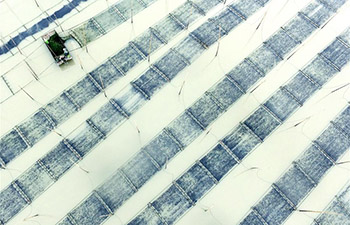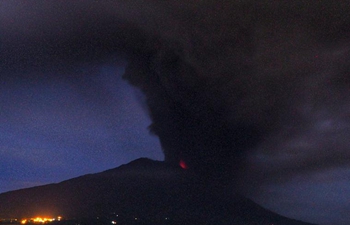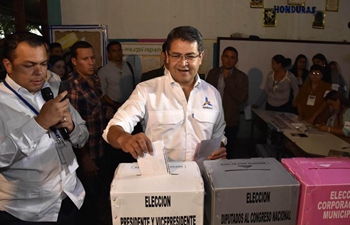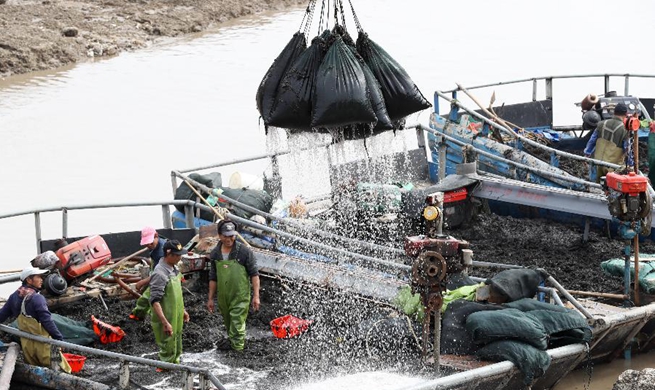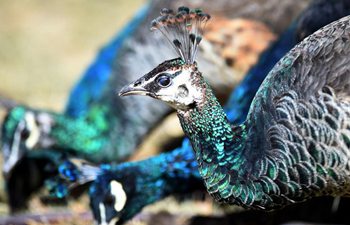SAN FRANCISCO, Nov. 27 (XINHUA) -- A team of researchers led by the University of California (UC) San Diego has for the first time observed nanoscale changes deep inside hybrid perovskite crystals that could offer new insights into developing low-cost, high-efficiency solar cells.
Using X-ray beams and lasers, researchers studied how a new promising class of solar cell materials, called hybrid perovskites, behaves at the nanoscale level during operation.
Their experiments revealed that when voltage is applied, ions migrate within the material, creating regions that are no longer as efficient at converting light into electricity.
"Ion migration hurts the performance of the light-absorbing material. Limiting it could be a key to improving the quality of these solar cells," said David Fenning, assistant professor of nanoengineering at UC San Diego.
He leads a team with researchers from the AMOLF Institute in the Netherlands and Argonne National Laboratory. Their findings were published in Advanced Materials.
Hybrid perovskites are crystalline materials made of a mixture of both inorganic and organic ions. They are promising materials for making next-generation solar cells because they are inexpensive to manufacture and are considerably efficient at converting light into electricity.
The researchers performed nanoprobe X-ray fluorescence measurements on the crystals to create high-resolution maps of the atoms inside the material, which revealed that when voltage is applied, the bromine ions migrate from negatively charged areas to positively charged areas.
Then the researchers shined a laser on the crystals to measure a property called photoluminescence -- the material's ability to emit light when excited by a laser -- in different areas of the crystals.
A good solar cell material emits light very well, the higher the photoluminescence, the more efficient the solar cell should be.
Fenning and his team are now exploring ways to limit bromine migration in methylammonium lead bromide and other hybrid perovskites.




